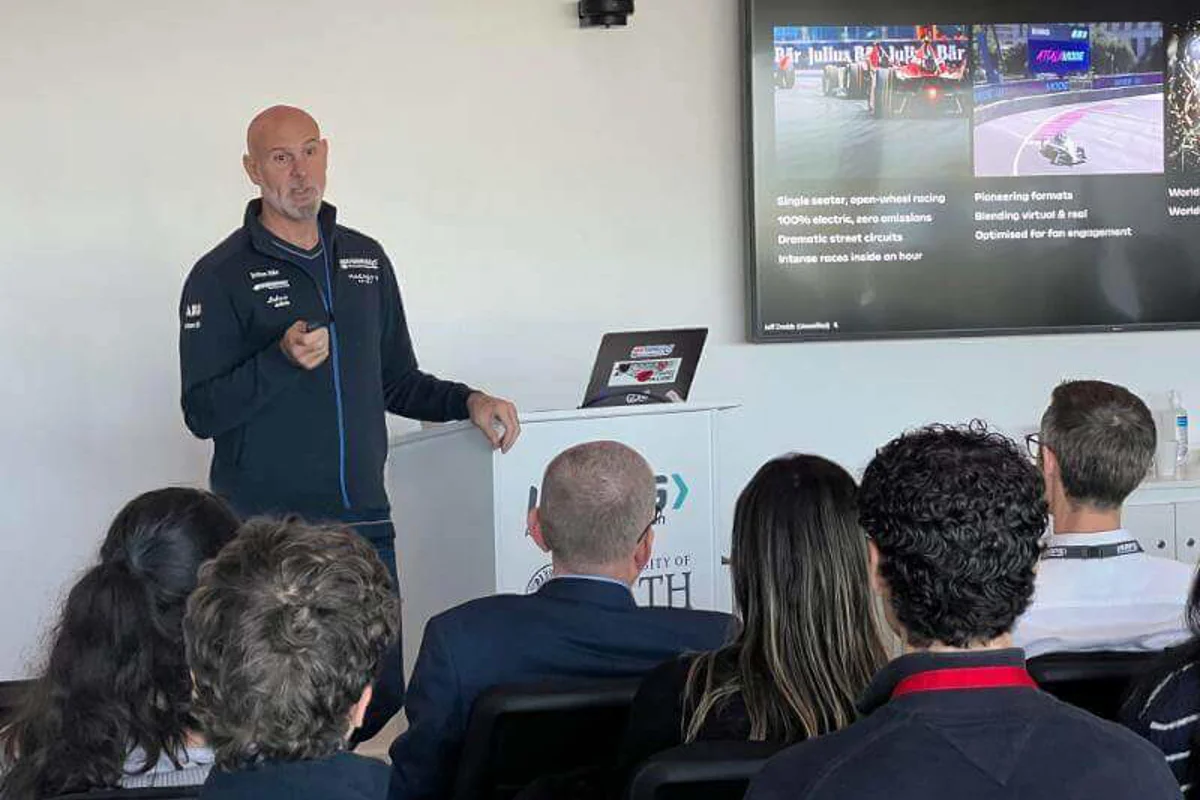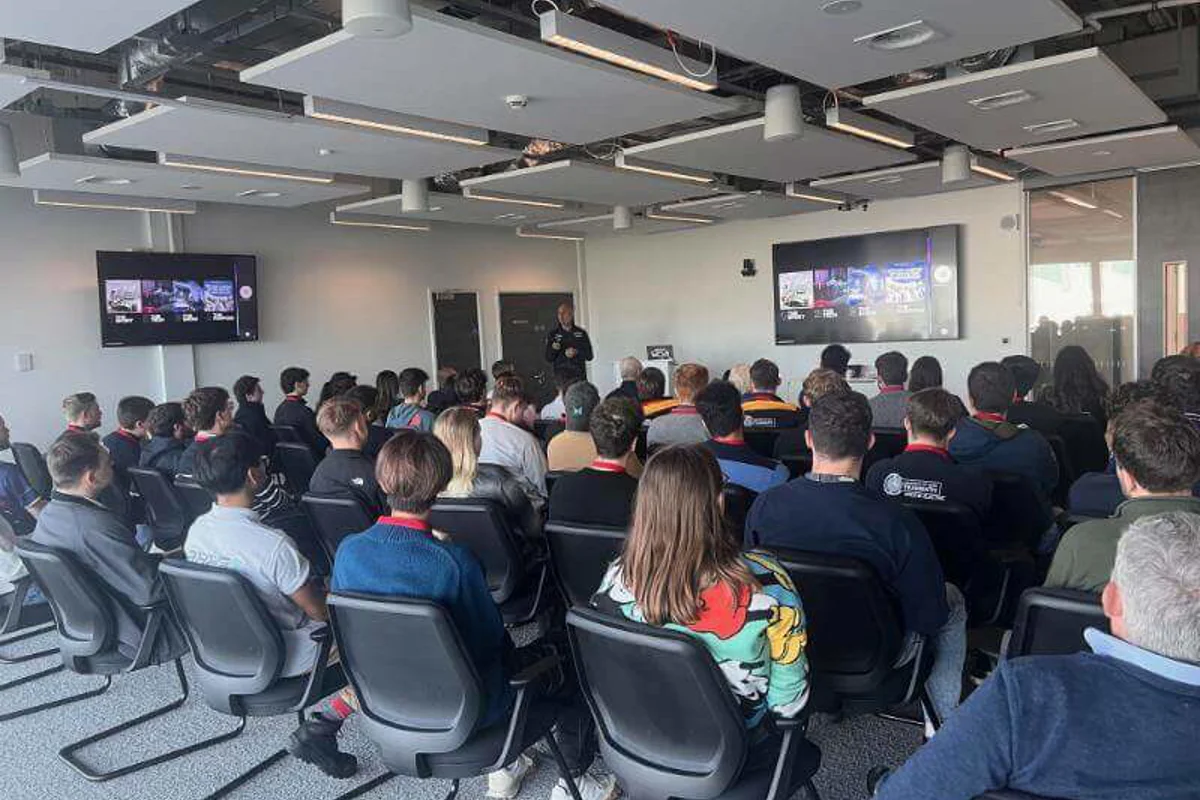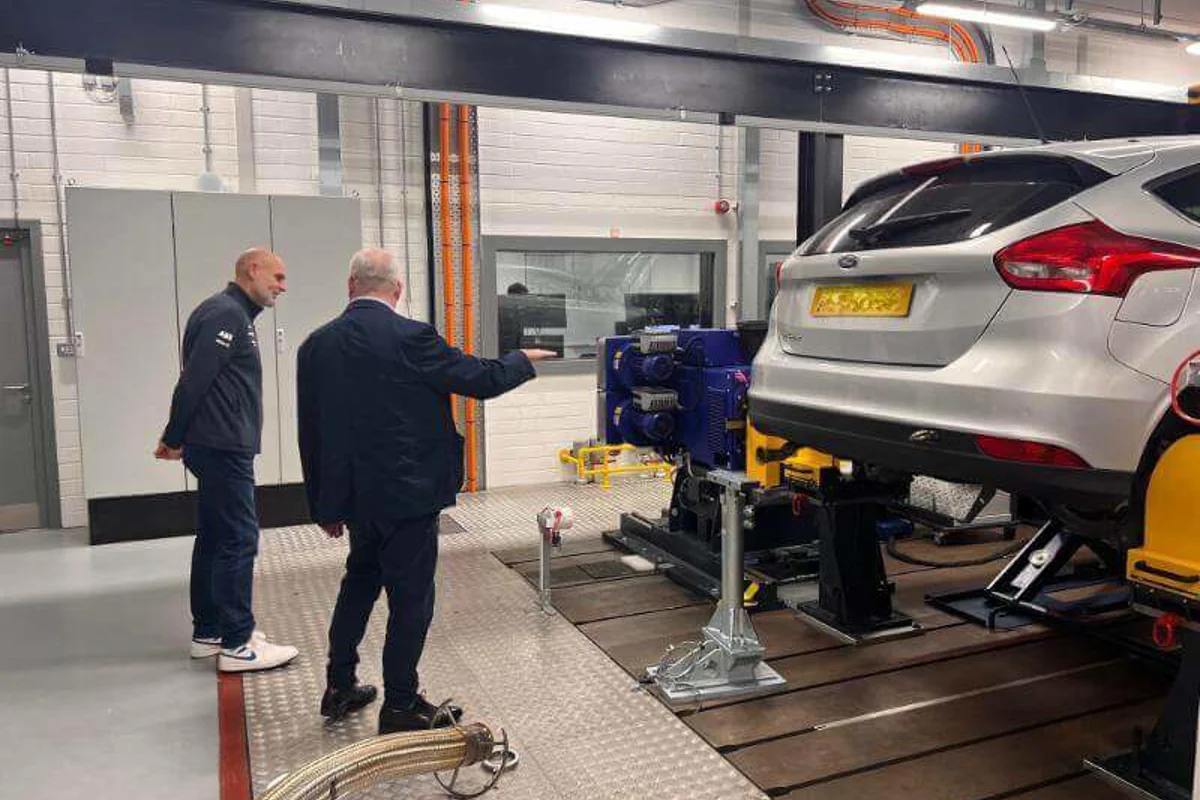IAAPS hosts Formula E CEO for a talk on sustainability, innovation and the future of motorsport
IAAPS had the huge pleasure of hosting a visit from Jeff Dodds, CEO of Formula E, who delivered an engaging talk to students from the University of Bath’s Team Bath Racing Electric (TBRe), as well as avid motorsport enthusiasts among the IAAPS team.
During his visit, Dodds discussed Formula E’s innovative approach to sustainability, its rapid growth and its unique ability to blend growing global appeal with a strong environmental ethos.
He also toured the world-class facilities at IAAPS, which are leading the way in clean propulsion research, and exchanged ideas with staff about the future of motorsport. His visit was part of ongoing collaborative engagements between IAAPS, the University of Bath and industry leaders in sustainable mobility, providing a unique opportunity for students and staff alike to gain valuable knowledge and behind-the-scenes insights.
Revolutionising Motorsport for a Sustainable Future
Dodds began by setting the scene of the founding principles of Formula E. Launched a decade ago with the bold vision of accelerating the transition from internal combustion engines to electric power, Formula E has created a platform for sustainability in motorsport. At its inception, only 300,000 electric vehicles (EVs) were sold globally each year; today, that figure has surged to between 18 and 20 million. After a challenging start, nearly going out of business after just two races, Formula E has since evolved into one of the elite single-seater racing series, alongside Formula One and IndyCar.
What sets Formula E apart is its complete reliance on battery-electric vehicle power, unlike Formula One and IndyCar, which use hybrid powertrains.
The unique driving experience of Formula E has been described by many as a cross between traditional racing and gaming. "From simulation racing to the real world, Formula E is a smaller step compared to Formula One," highlighted Dodds, emphasising how the sport integrates gaming elements into its DNA.
Key players in Formula E, including Porsche, Nissan, Jaguar and McLaren, utilise the series as a proving ground for cutting-edge electric propulsion systems. While 70% of the car components, such as the chassis and battery, are standardised, teams achieve a competitive edge, efficiencies and performance gains through their motors, powertrain and software engineering - areas that remain fiercely contested.
Economically, Formula E presents a stark contrast to the expensive world of Formula One, with the cost of setting up a Formula E team ranging from $20 to $30 million, compared to a billion-dollar price tag for a Formula One team.




Leading the Charge with Next-Generation Technology
Formula E has come a long way since its first iteration. "Ten years ago, when the first car was launched, it was pretty poor by today’s standards, let's be honest. The top speed was 140 miles an hour, and the battery lasted for half the race," Dodds recalled. "Now, we’re talking 200 miles an hour, and the battery lasts the entire race.” The second generation of Formula E cars, introduced after four seasons, featured batteries capable of powering the cars through the entire race, increased top speeds to 170 miles per hour, and improved acceleration to 0-60 mph in 2.8 seconds. Today, the third-generation Formula E cars boast a top speed of 200 miles per hour, 0-60 mph in 2.6 seconds, and a sleek, more aerodynamic design. Dodds revealed that this December, an evolution of the Gen 3 car will hit the tracks with significant upgrades, including two powertrains capable of creating a four-wheel drive. The result? An acceleration of 0-60 mph in just 1.8 seconds - 30% faster than a current Formula One car. Looking ahead, Generation 4 cars are expected to deliver even more impressive performance, though details still remain under wraps.
As government mandates around the world push for an end to internal combustion engine sales by 2035, Formula E's role as a proving ground for electric technology has never been more critical. Automotive OEMs view Formula E as a laboratory, testing innovations that can later benefit commercial vehicles.
Tackling Motorsport’s Carbon Footprint
Despite the carbon footprint associated with operating a global racing series, Formula E produces significantly less carbon than other major motorsports. The series is said to generate about 25,000 tonnes of carbon annually - just 10-20% of Formula One’s carbon footprint. The commitment to reducing emissions is evident in logistical innovations, such as transporting the entire championship using just three planes, with plans to reduce this number to two next year through more efficient packaging and transport practices. “We generate a fraction of the emissions of other major motorsports," Dodds said, pointing to the ongoing logistical efficiencies that help reduce Formula E’s environmental impact.
The series also heavily invests in circular economy principles, recycling 25% of its cars, 90% of its batteries, and 25% of its tyres. These sustainability efforts have earned Formula E a seat at high-profile environmental conferences such as COP28, where the sport engages wider audiences in conversations about climate change.
Formula E: A Magnet for Celebrities and Advocates of Sustainability
Beyond its technological advancements, Formula E has become a popular destination for celebrities and influencers drawn to the glamorous world of motorsport. High-profile figures such as Leonardo DiCaprio, Orlando Bloom, Eva Longoria and Brie Larson are often spotted at races. While these stars enjoy the lifestyle that comes with motorsport, Formula E provides them a platform to advocate for environmental sustainability. "We’re becoming a bit of a hotbed for influencers and celebrities. They come for the glamour, but when asked about their environmental views, they can say, 'I’m focused on climate change and want to do the right thing for the next generation,'" Dodds noted.
Formula E’s growth is equally remarkable. It is now the fastest-growing motorsport globally and the fourth-largest, trailing only Formula One, MotoGP and the World Rally Championship. By 2030, it is expected to be second only to F1 with a rapidly expanding fanbase that contrasts with traditional motorsports. Currently, 50% of Formula E’s audience is under 40 years old, and 85% are focused on sustainability and next-generation technology. This younger, more diverse fanbase aligns with Formula E’s emphasis on environmental responsibility.
A closer Look at IAAPS' Advanced Capabilities
Following his talk, Dodds toured IAAPS' cutting-edge facilities, learning about the centre's research and innovation in propulsion systems. The visit allowed IAAPS to showcase its expertise in sustainable mobility, aligning with Formula E’s mission of advancing clean technologies.
For the students of TBRe, the visit was both inspirational and educational. They had the chance to hear directly from one of the leading figures in electric motorsport, gaining valuable insights into the intersection of racing, sustainability, and next-gen technology. Furthermore, Dodds’ visit reaffirmed the importance of IAAPS’ role in shaping the future of sustainable propulsion and motorsport innovation.